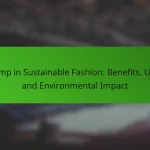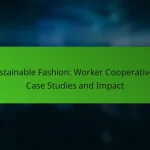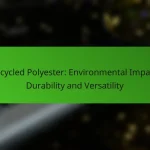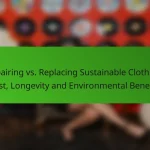As the demand for eco-friendly clothing grows, several sustainable fashion brands are leading the way by prioritizing ethical production and environmental responsibility. These brands not only offer stylish options for conscious consumers but also implement practices that significantly reduce their carbon footprint and waste. By focusing on material sourcing, labor practices, and supply chain transparency, they ensure that their products align with the values of sustainability and ethical consumption.

Which sustainable fashion brands are leading the market?
Several sustainable fashion brands are at the forefront of the market, focusing on eco-friendly practices and ethical production. These brands prioritize environmental responsibility while offering stylish clothing options for conscious consumers.
Patagonia
Patagonia is renowned for its commitment to environmental sustainability and social responsibility. The brand uses recycled materials and organic cotton, ensuring that its products have a minimal ecological footprint.
Additionally, Patagonia encourages customers to repair their clothing rather than discard it, promoting a culture of sustainability. Their Worn Wear program allows consumers to buy used items or trade in their old gear for store credit.
Eileen Fisher
Eileen Fisher focuses on creating timeless, high-quality garments with a strong emphasis on sustainability. The brand utilizes organic and renewable fibers, and it is committed to reducing waste through its take-back program.
Through this initiative, customers can return their used Eileen Fisher clothing for recycling or resale, contributing to a circular economy. The brand also supports fair labor practices, ensuring ethical treatment of workers in its supply chain.
Reformation
Reformation is a popular choice among eco-conscious consumers, known for its trendy designs and sustainable practices. The brand tracks its environmental impact and provides transparency about its materials and manufacturing processes.
Reformation uses sustainable fabrics like Tencel and recycled materials, aiming to minimize waste and carbon emissions. Their “RefScale” tool allows customers to see the environmental impact of their purchases, making it easier to make informed choices.
Everlane
Everlane emphasizes “radical transparency,” providing detailed information about its factories and pricing. The brand sources high-quality materials and focuses on ethical production practices, ensuring fair wages for workers.
Everlane’s commitment to sustainability includes using recycled materials and minimizing waste in its supply chain. The brand’s “Choose What You Pay” model allows consumers to select from different price points based on their budget, promoting accessibility while maintaining quality.
People Tree
People Tree is a pioneer in sustainable and fair trade fashion, offering a range of stylish clothing made from organic cotton and other eco-friendly materials. The brand is dedicated to ethical production, ensuring fair wages and safe working conditions for its artisans.
People Tree’s collections are designed to be timeless, reducing the need for fast fashion. The brand also focuses on transparency, providing information about the origins of its materials and the impact of its production processes.
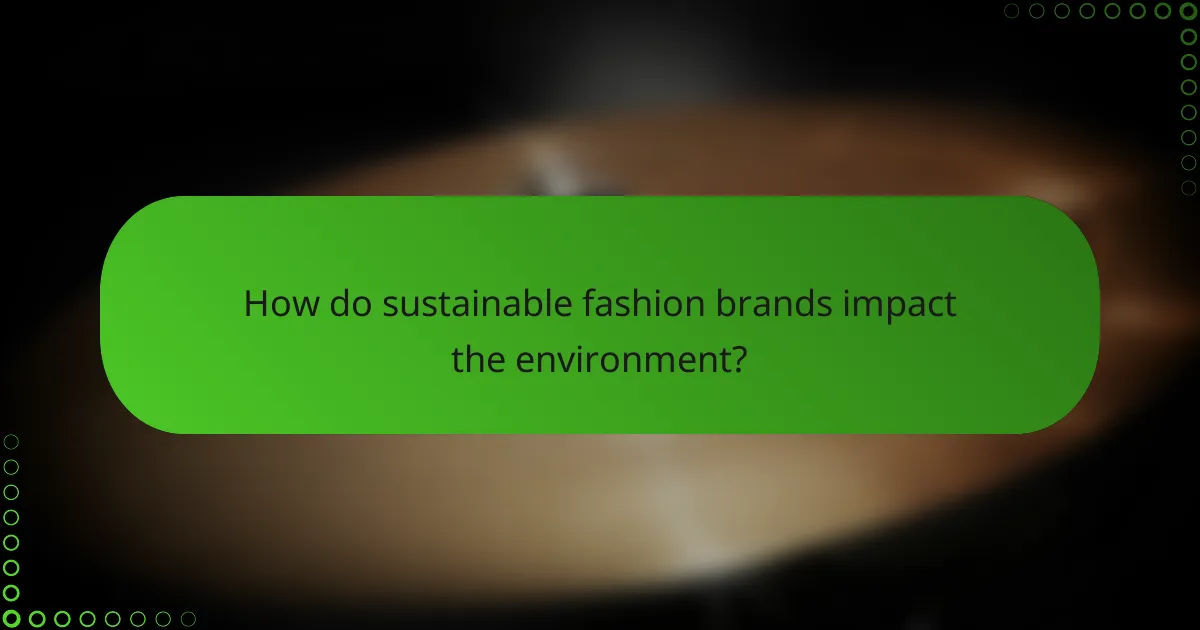
How do sustainable fashion brands impact the environment?
Sustainable fashion brands significantly reduce environmental harm by adopting eco-friendly practices. These brands focus on minimizing their carbon footprint, lowering water usage, and reducing waste production throughout their supply chains.
Reduced carbon footprint
Sustainable fashion brands aim to lower their carbon emissions by using renewable energy sources and optimizing transportation methods. For instance, many brands prioritize local production to cut down on the emissions associated with shipping goods over long distances.
Additionally, some companies invest in carbon offset programs to balance out their emissions. This can include supporting reforestation projects or investing in renewable energy initiatives, which contribute to a more sustainable future.
Lower water usage
Water consumption is a critical issue in the fashion industry, particularly in the production of cotton and dyeing processes. Sustainable brands often implement water-efficient technologies and practices, such as closed-loop systems that recycle water during production.
For example, brands may use organic cotton, which typically requires less water than conventional cotton. By choosing materials and methods that minimize water usage, these brands help preserve vital water resources.
Minimized waste production
Sustainable fashion brands focus on reducing waste by adopting practices like recycling, upcycling, and using biodegradable materials. They often design products with longevity in mind, encouraging consumers to buy less and choose quality over quantity.
Many brands also implement take-back programs, allowing customers to return old garments for recycling or repurposing. This not only diverts waste from landfills but also promotes a circular economy in the fashion industry.

What criteria should consumers consider when choosing sustainable fashion?
Consumers should evaluate sustainable fashion based on material sourcing, labor practices, and transparency in the supply chain. These criteria help ensure that clothing is produced ethically and with minimal environmental impact.
Material sourcing
Material sourcing refers to the origin and type of materials used in fashion products. Look for brands that utilize organic, recycled, or upcycled materials, as these options typically have a lower environmental footprint. For example, organic cotton and Tencel are often preferred over conventional cotton and polyester.
Additionally, consider the availability of certifications, such as Global Organic Textile Standard (GOTS) or OEKO-TEX, which indicate adherence to sustainable practices. Brands that prioritize eco-friendly materials often provide information on their sourcing processes, helping consumers make informed choices.
Labor practices
Labor practices encompass the working conditions and treatment of employees in the fashion industry. Ethical brands should ensure fair wages, safe working environments, and reasonable hours for their workers. Look for companies that are certified by organizations like Fair Trade or those that publish their labor policies transparently.
When evaluating a brand, consider its commitment to social responsibility. Brands that support local communities or provide training and development opportunities for workers often demonstrate a stronger commitment to ethical labor practices.
Transparency in supply chain
Transparency in the supply chain involves the openness of brands regarding their production processes and sourcing. Consumers should seek out brands that openly share information about where and how their products are made. This can include details about factories, labor conditions, and environmental impact.
Brands that provide traceability tools, such as QR codes or detailed product pages, allow consumers to verify claims about sustainability. A transparent supply chain not only builds trust but also empowers consumers to make choices aligned with their values.

Where can consumers find sustainable fashion brands in the US?
Consumers in the US can discover sustainable fashion brands through various channels, including online marketplaces, local boutiques, and pop-up shops. Each option offers unique benefits and a diverse selection of eco-friendly clothing and accessories.
Online marketplaces
Online marketplaces provide a convenient way to access a wide range of sustainable fashion brands. Websites like Etsy, Amazon Handmade, and Poshmark feature numerous sellers focused on eco-friendly practices and materials.
When shopping online, look for brands that prioritize transparency in their supply chains and use sustainable materials. Reading reviews and checking for certifications can help ensure you are supporting genuinely sustainable businesses.
Local boutiques
Local boutiques often curate collections of sustainable fashion brands, making it easier to find unique pieces while supporting small businesses. Many cities have shops dedicated to eco-conscious clothing, showcasing local designers and sustainable labels.
Visiting these boutiques allows consumers to feel the fabrics and try on items, which can enhance the shopping experience. Engaging with shop owners can also provide insights into the brands’ sustainability practices.
Pop-up shops
Pop-up shops are temporary retail spaces that often feature sustainable fashion brands for a limited time. These events can be found in various locations, such as markets, festivals, or community events, and provide an opportunity to discover new brands.
Attending pop-up shops can be a fun way to explore sustainable fashion while connecting with like-minded individuals. Keep an eye on local event listings or social media for announcements about upcoming pop-up events in your area.
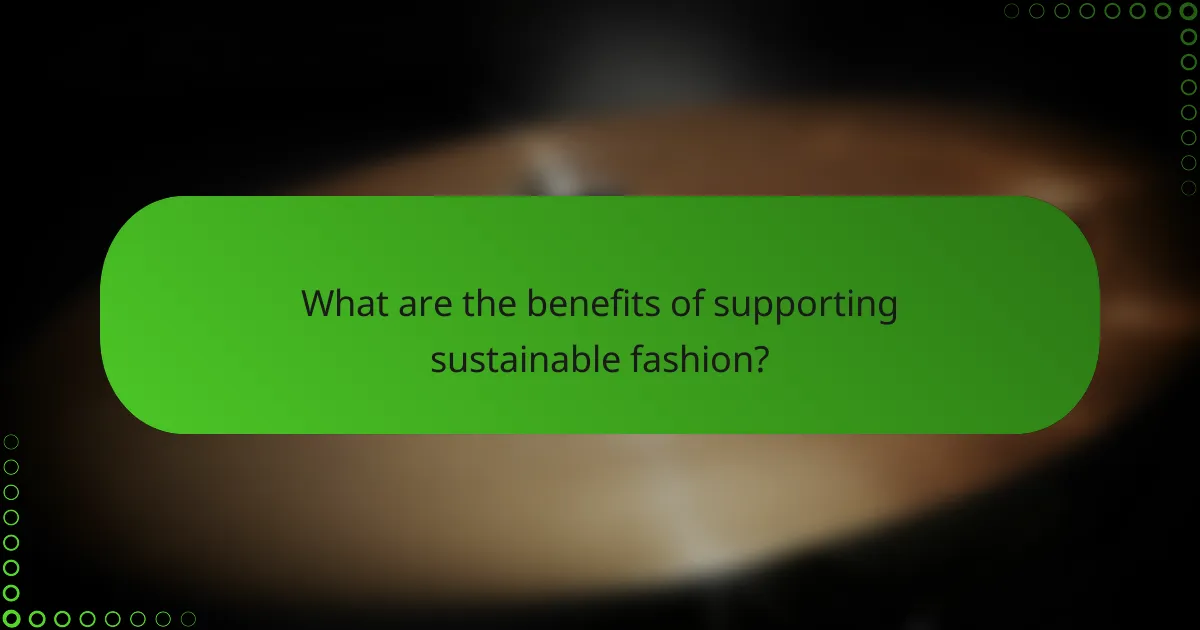
What are the benefits of supporting sustainable fashion?
Supporting sustainable fashion offers numerous advantages, including environmental protection and ethical labor practices. By choosing eco-friendly brands, consumers can reduce waste, lower carbon footprints, and promote fair treatment of workers in the fashion industry.
Ethical consumption
Ethical consumption refers to making purchasing decisions that align with moral values, particularly regarding social justice and environmental sustainability. When consumers choose sustainable fashion, they support brands that prioritize fair wages, safe working conditions, and eco-friendly materials.
To practice ethical consumption, consider researching brands before making purchases. Look for certifications such as Fair Trade or GOTS (Global Organic Textile Standard), which indicate adherence to ethical practices. Additionally, prioritize companies that are transparent about their supply chains and labor practices.
Common pitfalls include falling for “greenwashing,” where brands falsely claim to be sustainable. Always verify claims and seek out independent reviews or third-party certifications to ensure your purchases truly reflect your values.

